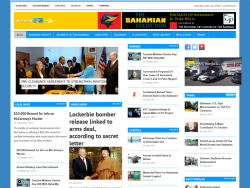By EDWARD WONG, San Francisco Business Times
Even an 800-pound gorilla can behave like a guerilla.
Philips Electronics’ campaign for its new MC-I200 Internet radio, which just launched in the college-town test market of Austin, Tex., will feature the product in a series of concerts, club parties and campus cafes, as well as “wild posting” ads plastered across construction sites.
Designed by San Francisco-based advertising firm Amazon Advertising, the global audio giant’s campaign reflects the increasing adoption of so-called “under-the-radar” or guerilla marketing techniques. Once the domain of firms that simply couldn’t afford traditional advertising, it first caught on with liquor companies and dot-coms. Now it’s being increasingly used by mainstream advertisers in an attempt to engage ad-jaded consumers.
In addition to special events like Philips’, the practice can include paying attractive men or women to drink a certain drink or fiddle with the latest PDA while chatting up its merits in public, soliciting online chat room “lurkers” to spread the word about a product or service, and displaying branded swag, posters or logos in places frequented by a company’s target market.
“You’re demonstrating the brand by integrating the product or services into their lives in ways they appreciate and which demonstrate that you understand them,” said Millie Olson, co-founder of Amazon Advertising.
Understanding the ‘magic trick’
There are several factors driving the trend into the mainstream advertising world. The most significant, say marketers, is that consumers are increasingly savvy and prone to tune out the most overt pitches.
“Kids have been in focus groups, they know they’re in a target market and they know that celebrities are paid,” said Courtney Buechert, executive vice president of McCann-Erickson San Francisco. “How interesting is the magic trick if you know exactly where the rabbit comes from?”
But consumers will, the thinking goes, trust the word of mouth of someone who is ostensibly an average Jane or Joe like themselves ラ albeit somewhat better looking.
Another factor is that it is increasingly difficult to reach as many people through traditional advertising outlets.
“As media continues to fragment, with TV going from three networks to dozens, newspapers moving from big circulations to smaller, more specialized circulations, etc. ラ and as those old media continue to hold prices up ラ marketers are naturally looking for other options,” said Brian Hurley, a partner with San Francisco-based Grant, Scott & Hurley.
Legitimized tool
Few, however, are predicting the demise of traditional advertising. Rather, it appears that guerilla marketing is emerging as another tool alongside direct marketing, public relations and branding ラ which larger ad firms are already offering as “integrated services” either directly or through affiliated companies. Indeed, the Philips campaign includes magazine and radio ads in addition to the guerilla marketing.
At the same time, some believe that the consumer weariness that led to an increasing use of “under-the-radar” ads is also changing the tone of traditional advertising.
“We have to make our stories more truthful and our analogies more entertaining,” said Buechert. “If I’m going to go into your home and borrow 30 seconds of your time, I have to, one, offer you information and, two, tell you a story in a way that, even if you chose not to buy, it was still worth your time.”
Most guerilla marketing is still handled by specialized firms, such as San Francisco-based Ammo Marketing, which has done work with Volvo and Electronic Arts and is currently working on a campaign for Miller Brewing Co. In the last year, however, the company has been increasingly receiving calls from traditional advertising firms, including TBWA/Chiat/Day and Odiorne Wilde Narraway & Partners, to work on one aspect of broader campaigns, according to co-founder Mo Clancy.
Depending on what a client wants, the duration of the campaign and the number of cities involved, Ammo’s rates can range from around $250,000 up to $4 million. But does their work truly provide tangible results?
Exception or rule?
In a campaign last year for Electronic Art’s online mystery game “Majestic” ラ which included towing charred cars around town, hiring women to don black dresses and pass out cards in bars, leaving random clues around high-traffic areas and, importantly, pitching media to cover the campaign ラ game registration was up 110 percent over cities where EA only ran traditional ads.
Some would argue that’s the exception rather than the rule, however.
“I don’t think anyone is that influenced by a lame shill drinking an orange mocha frapuccino,” said Tom Bedecarre, CEO of San Francisco-based advertising firm AKQA. “It makes for good cocktail chatter, but I don’t think they return results to clients.”
Even if it does work, others are uncomfortable with the less-than-forthright aspects of the trend, notably when a paid promoter pretends to be just an enthusiastic user.
“Suffice to say, everyone is noticing the rampant use of under-the-radar marketing, so much so that I think there is going to be a backlash ラ in favor of straightforward, entertaining and engaging, traditional old advertising,” said John Yost, a partner at San Francisco-based Black Rocket Advertising.
James Temple covers advertising and public relations for the San Francisco Business Times.



